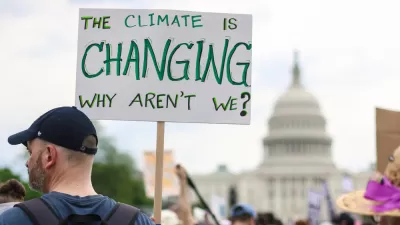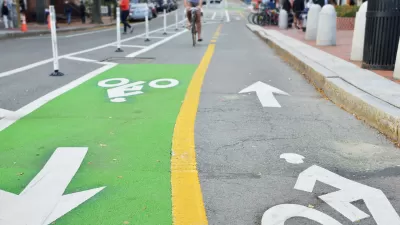Melinda Burns uses two California cities through which to investigate the reasons why the foreclosure crisis has impacted communities in dramatically different ways.
A recent study has shown that local growth policies in place prior to the Housing bubble of the last decade had a marked impact on the the foreclosure rates in each city after the bubble burst.
"It's a pattern that was repeated throughout California, according to a recent study in Urban Affairs Review by Glasgow and co-authors Paul Lewis and Max Neiman, political scientists at Arizona State University and University of California, Riverside, respectively. The stronger the city council opposition to residential growth in the late 1990s, their data show, the lower the rate of foreclosures nearly a decade later."
Even after adjusting for other contributing factors, "the researchers find that "smart-growth" cities such as Davis and Santa Paula were at a definite advantage when the crisis hit. Typically, these cities placed limits on construction, put a premium on the quality of growth, and resisted the temptation to annex land outside their boundaries. They were finicky about the location, type, and design of new housing, and they likely attracted fewer risky buyers, or investors seeking to "flip" properties for quick resale."
FULL STORY: How Foreclosures Feasted on Some Cities, Not Others

Planetizen Federal Action Tracker
A weekly monitor of how Trump’s orders and actions are impacting planners and planning in America.

Maui's Vacation Rental Debate Turns Ugly
Verbal attacks, misinformation campaigns and fistfights plague a high-stakes debate to convert thousands of vacation rentals into long-term housing.

San Francisco Suspends Traffic Calming Amidst Record Deaths
Citing “a challenging fiscal landscape,” the city will cease the program on the heels of 42 traffic deaths, including 24 pedestrians.

Amtrak Rolls Out New Orleans to Alabama “Mardi Gras” Train
The new service will operate morning and evening departures between Mobile and New Orleans.

The Subversive Car-Free Guide to Trump's Great American Road Trip
Car-free ways to access Chicagoland’s best tourist attractions.

San Antonio and Austin are Fusing Into one Massive Megaregion
The region spanning the two central Texas cities is growing fast, posing challenges for local infrastructure and water supplies.
Urban Design for Planners 1: Software Tools
This six-course series explores essential urban design concepts using open source software and equips planners with the tools they need to participate fully in the urban design process.
Planning for Universal Design
Learn the tools for implementing Universal Design in planning regulations.
Heyer Gruel & Associates PA
JM Goldson LLC
Custer County Colorado
City of Camden Redevelopment Agency
City of Astoria
Transportation Research & Education Center (TREC) at Portland State University
Jefferson Parish Government
Camden Redevelopment Agency
City of Claremont




























